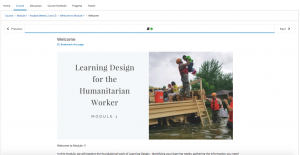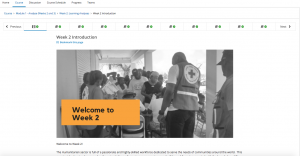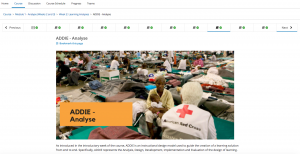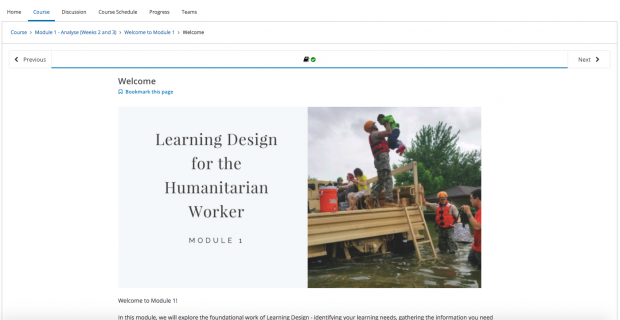For the Content Module assignment on edX Edge, I decided to build Week 2 of my course on Learning Design for the Humanitarian Worker. Week 2 consists of identifying learning needs (Learning Needs Analysis) and analysing the learning context (ADDIE’s Analyse phase).
From the graphics perspective, I decided to make use of splash pages as a navigational feature to mark a new topic for learners as they go through the week. This complements edX’s navigational feature found on the top of the page (that serve as breadcrumbs). The screenshots to the splash pages are found below.




The digital story assignment helped me frame the content for Week 2. I chose to create a digital story in the form of a welcome video for various reasons. Having a micro-learning video helps learners feel excited about what’s ahead for the week in a short, engaging video. I also chose to introduce the Week through a case study perspective (Lisa’s story) – framing this video from someone who might be taking this course could make learners feel at ease with sharing and confident that they too can achieve the learning objectives. Moreover, throughout the Week, Lisa’s story is used as an example within the narrative of the week’s content. This allows learners to have a visual of what they themselves are expected to achieve, in addition to having a salient example from the perspective of someone who could be their colleague which they can reflect from.
As for the interactivies, I chose to have three points of discussion throughout the week to encourage social learning. Learners are encouraged to informally exchange ideas with small teams – they can create small groups according to the sector within humanitarian work so they can familiarise themselves with their fellow learners and see that they are not alone in this learning journey. Within the week, they are also encouraged to share the learning needs they have identified within their own context, to encourage the problem-based learning approach previously introduced as part of the Course Philosophy. Finally, they are encouraged to discuss the Analysis of their Learning Context and reflect on their progress on their Course Plan (a document they are working on throughout the course) – this encourages social learning and to spark that conversation amongst other learners and exchange ideas and provide advise/support.
Overall, I enjoyed putting this content module together. I found that my experience in building this content module was more focused that I had expected – having thought out the entirety of the course for Assignment 3 was really helpful in framing the course, the learning outcomes and how the content flows from week to week. Assignment 3 significantly helped with thinking out the course philosophy, objectives and assessment, and when it came to Assignment 4, I was able to quickly determine how to build the course, and it guided me in selecting the content and interactivities to integrate within Week 2.
Image sources (screenshots of splash pages):
Wikimedia Commons
Army.mil
Af.mil
Floodlist.com
